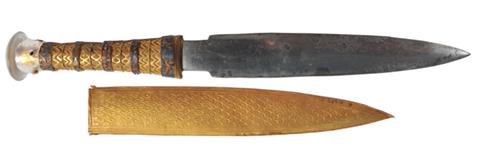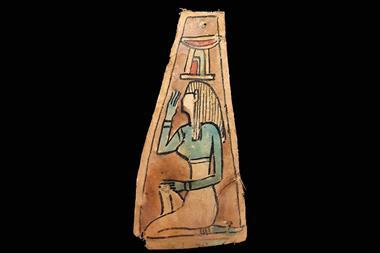Analysis of the iron in the 3000-year-old mummy’s dagger suggests it originally came from a meteorite
A dagger that lay on the mummified remains of Egyptian pharaoh Tutankhamun was made from meteoritic iron according to scientists in Italy. The pristine blade is a rare example of ironwork in the late bronze age.

Discovered by archaeologist Howard Carter in 1922, King Tut’s tomb housed hundreds of regal artefacts from golden masks to ornate statues. Carter also found two ceremonial daggers within the pharaoh’s wrappings, one of which was an iron dagger placed on his right thigh.
Given the rarity of iron metalwork in ancient Egypt, Daniela Comelli from the Polytechnic University of Milan and her colleagues looked at the blade’s chemical makeup to determine its origin. Using a portable x-ray fluorescence spectrometer, the team found the blade mainly consists of iron with a high amount of nickel (10.8wt%) and cobalt (0.58wt%).
The high nickel–cobalt ratio is consistent with levels often found in iron meteorites. To find the material’s source on Earth, the group studied data from 20 known meteorite sites within a 2000km radius of the Red Sea. One sample, Kharga, found near the port city of Mersa Matruh, has a similar composition to King Tut’s blade.
References
D Comelli et al, Meteorit. Planet. Sci., 2016 (DOI: 10.1111/maps.12664)











No comments yet